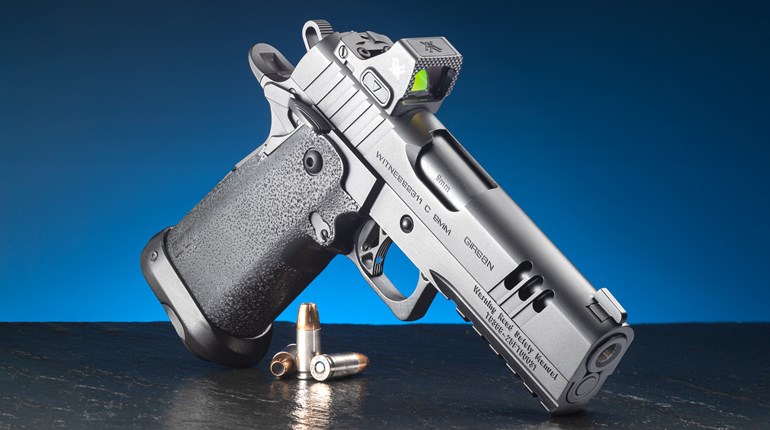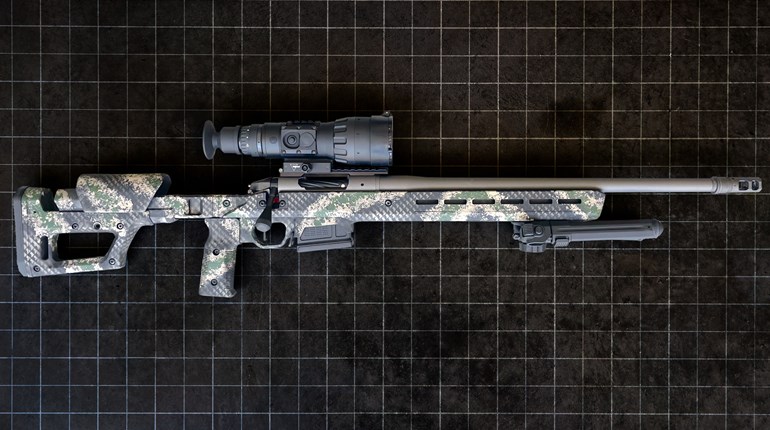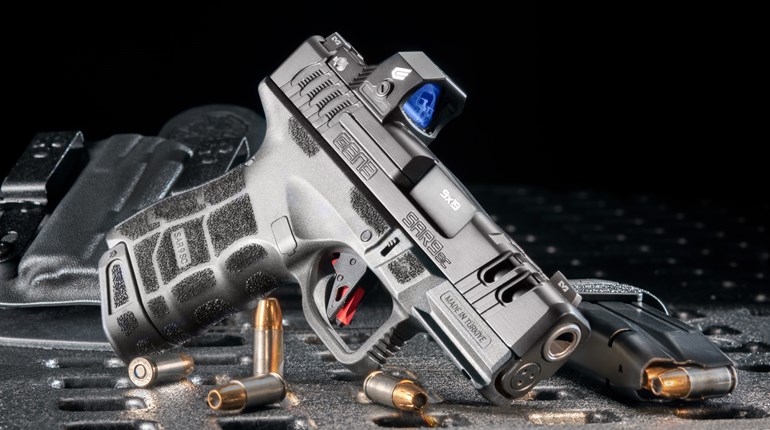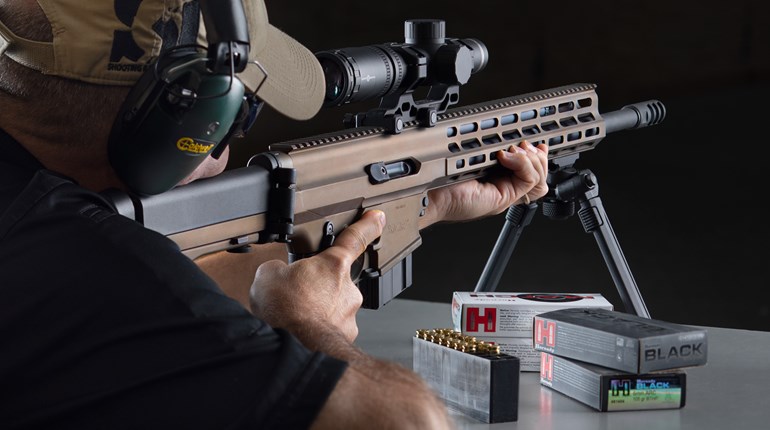
Back in the 1950s, the US Army did not select the FAL as its new rifle, which was too bad. Fast-forward to the 21st century, and one other detail that has kept the FAL from being as popular as the AR is that building it requires more than the tools and skill level needed to assemble an AR-15. However, the FAL has been—and still is—available to the gun-owning public. And the premier manufacturer of the FAL here in ’Murica is DS Arms, a company that can build one to suit your needs, tastes and requirements. I have two recently acquired examples that prove the quality and versatility of both the platform and the company.
The first was a parts kit of mine from, of all places, India. And, wretched it was. But, the DS Arms riflesmiths were endlessly patient. They replaced each part as we found it to be out-of-spec, so much so there was no need to worry about 922(r) compliance when we were done, since the majority of the parts were made in America at that point. I had it built on an inch-pattern receiver, with an aluminum Para trigger housing and the barrel trimmed to 16.5 inches. The end result was a light, compact thumper of a .308 carbine, and one to which I had to add some changes of my own. I wanted a basic, lightweight “run-n-gun kind of .308,” and this FAL is now that.

The stock is a folder, derived from the FN Para, and it folds to the right. It is stout enough to be used as a hammer, but it was just a tad short for me. I really crawl up on a stock, and at times the rear sight bumped my face. So, I wrapped the buttstock with paracord to give it a bit more grip on my shoulder and add just a smidgen of length. I wasn’t looking for National Match accuracy, nor a trigger pull to equal such precision, but there’s nothing wrong with a clean FAL trigger pull. This one breaks at slightly more than 5 pounds. What became a problem were the sights.
Iron sights are great backups, but this is the 21st century, and I needed a dot. The top of the receiver is a sheet-metal stamping—a stout one, but still no place to mount a red dot. I already had a handguard from Aim Sports as a solution. Its replacement handguard assembly has M-Lok slots and a top rail that is perfect for mounting a red dot. The trick is selecting one that has a low-mount attachment, as if you were putting it on a shotgun. I mounted a Trijicon RMR in a low mount, and the dot is low enough that I can still get a proper cheek weld.

Once I had that handled, I re-rigged the sling so it used the QD adapter that Aim Sports makes, and just like that I had a handy, lightweight and compact .308 that has the legendary FAL reliability. If you want one like mine, then you want the 16-inch traditional profile barrel, Para stock rifle from DS Arms.
The second FAL is one DS Arms (DSA)offers as a complete package: its SA58 Improved Battle Carbine. This is built on a steel metric receiver with an aluminum lower. The top cover of the receiver is fitted with a shell that has a rail machined into it. The handguards are also aluminum (unlike the plastic of the originals) and the top rail matches the receiver rail so you have a full-length rail on top. The handguard has M-Lok slots as well. The barrel is fluted, and the trigger housing is fitted with a SAW-style pistol grip.

On the rear of the trigger housing, DSA has fitted one of its folding stocks. It is not only folding, but also length-of-pull is adjustable, as is cheek-piece height. A nice touch on the cheekpiece is that, when raised, the cheekpiece remains level to the bore. Therefore, you don’t have an angled-up-on-the-front cheekpiece whacking you on each shot.
To check out the accuracy of the SA58, I mounted a Leupold 1-6x20 mm Mark 6, an ultra-sturdy optic with a 34 mm tube. Tough, clear optics do come with a price, and the Leupold and its rings added a pound and a half to the full-up weight, but that just makes the SA58 even easier to shoot (from a bench, at least).
FALs have some aspects common to rifles of their period, and some not. The magazines lock in place (just like an M14/M1A), by hooking the lip at the front into the receiver and pivoting the rear up until it locks in place. The FAL locks open when empty. The magazine catch and bolt hold-open/release are in front of the trigger guard. An aspect that many shooters find they desire on modern rifles is the charging handle is on the left side, and it does not reciprocate. On my Para build, the charging handle folds, while on the SA58, it does not.

The gas system on the FAL is a short-stroke piston, and it is adjustable. The marked dial on the front can be rotated to adjust gas flow by changing the amount of excess gas that gets vented. This makes the FAL less suitable for use with suppressors, as it is always venting some high-pressure gas on each shot. But, it permits the reliable use of a much wider variety of ammunition. I have a supply of Radway Green ammunition loaded in 1969 that is so under-powered, it will not cycle other semi-automatic .308 rifles. Yet, I can dial the FAL to run it with zero problems. Conversely, if I want to use a more modern load with powders unsuited to most semi-auto rifles, I have a lot more leeway.

All DS Arms FAL models have muzzle threads of 5⁄8x24 tpi RH, so all 7.62-compatible muzzle devices are yours for the choosing and use, be they flash hiders, muzzle brakes, suppressors.
 The FAL delivers accuracy that is entirely suitable for pretty much any shooter. If you are accustomed to what a tuned and custom-built bolt gun in 6.5 Creedmoor can do, then you might find the FAL a bit lacking. But, a slightly-more-than-MOA semi-automatic .308 Win. (the SA58) is still good out to beyond 600 yards, provided you are good enough to shoot at that range. My Para FAL isn’t an MOA rifle, at least in part because I’m using an unmagnified sight that itself has a 3.25-MOA dot for a reticle (meaning it covers 3.25 MOA at 100 yards), but I would not expect it to be. The velocity differences between the two rifles were negligible, so with a magnified optic, I’m sure the Para could achieve better accuracy, but it just wouldn’t look as much the part. The greatest difference was 38 fps, the smallest 8 fps. Curiously, the SA58 was always faster, but then my Para has seen a good number of rounds down the bore, and that wear could account for the small difference.
The FAL delivers accuracy that is entirely suitable for pretty much any shooter. If you are accustomed to what a tuned and custom-built bolt gun in 6.5 Creedmoor can do, then you might find the FAL a bit lacking. But, a slightly-more-than-MOA semi-automatic .308 Win. (the SA58) is still good out to beyond 600 yards, provided you are good enough to shoot at that range. My Para FAL isn’t an MOA rifle, at least in part because I’m using an unmagnified sight that itself has a 3.25-MOA dot for a reticle (meaning it covers 3.25 MOA at 100 yards), but I would not expect it to be. The velocity differences between the two rifles were negligible, so with a magnified optic, I’m sure the Para could achieve better accuracy, but it just wouldn’t look as much the part. The greatest difference was 38 fps, the smallest 8 fps. Curiously, the SA58 was always faster, but then my Para has seen a good number of rounds down the bore, and that wear could account for the small difference.

In an alternate universe, the U.S. Army trials of the 1950s that resulted in the M14’s selection would have gone differently. Perhaps the Army would not have “cooked the books” and instead adopted the FAL, as many argue it should have. In such a universe, might we still be using a version of the FAL to this day? Would the AR platform have even been invented in that case? Well, it didn’t happen that way, so as a result, the options of accessories, parts and upgrades for the FAL are not as vast as that of the AR or AK. That isn’t a problem, however, because you can find what you need, and you can have an FAL in pretty much any version you want, from Eisenhower-Era classic to 21st-century Modern, from DS Arms.






































